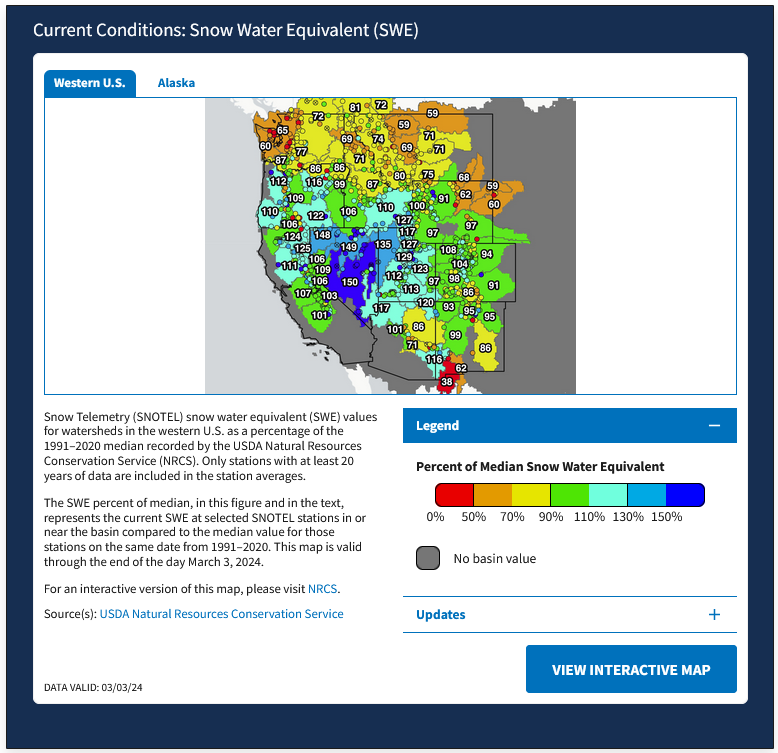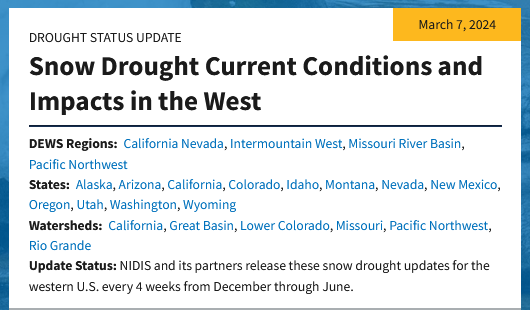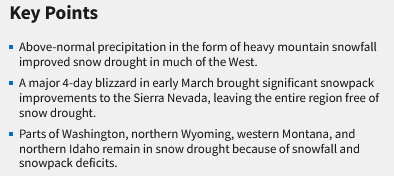Today Through the Fourth Friday (22 to 28 days) Weather Outlook for the U.S. and a Six-Day Forecast for the World: posted March 13, 2024
It is difficult to find a more comprehensive Weather Outlook anywhere else with the ability to get a local 10-day Forecast also.
This article focuses on what we are paying attention to in the next 48 to 72 hours. The article also includes weather maps for longer-term U.S. outlooks and a six-day World weather outlook which can be very useful for travelers.
First the NWS Short Range Forecast. The afternoon NWS text update can be found here but it is unlikely to have changed very much. The images in this article automatically update.
Short Range Forecast Discussion
NWS Weather Prediction Center College Park MD
Wed Mar 13 2024
Valid 12Z Wed Mar 13 2024 – 12Z Fri Mar 15 2024…Heavy snow develops over central Colorado Wednesday night into Thursday
followed by rain/mountain snow across the Four Corners to the southern
High Plains Thursday into Friday……Strong to severe thunderstorms possible from the Midwest to the
southern Plains from this evening into Thursday……Strong to severe thunderstorms with a slight risk of excessive rainfall
expected Thursday evening into early Friday from the southern Plains to
the Mid-South...An amplifying upper-level trough digging into the western U.S. is
gradually pushing the unsettled weather out of the Pacific Northwest into
the Intermountain region. The interaction of the upper trough with colder
air filtering southward is setting the stage for a long-duration snow
event from the central Rockies and down into the Four Corners over the
course of the next few days. The precipitation will first be focused over
the central Rockies from this evening into Thursday when wet snow is
forecast to be the heaviest across the Front Range of Colorado where a few
feet of new snow could fall. Lesser amounts are expected in adjacent
areas but one to two feet of wet snow is possible down into the High
Plains at locations such as Boulder and Denver, Colorado. Hazardous to
very difficult travel is expected as heavy snow and intense snow rates at
times (1-2 inches plus per hour) will lead to deteriorating travel
conditions beginning Wednesday and Wednesday night across the
central/southern Rockies and beginning across the Four Corners region
Thursday night.A second phase of the winter storm will then impact the Four Corners
Region beginning Thursday night, as the upper trough closes off into a
slow-moving upper low. Waves of heavy snow will impact the terrain areas
north of the Mogollon Rim and northeast toward the San Juans and southern
Colorado Rockies. Snow probabilities for 8 inches are moderate to high
(greater than 50%). Localized totals above a foot are possible for the
higher terrain.On the warm side of the system, low relative humidity and gusty winds will
continue to raise the danger of wildfires to locally extreme levels from
the Texas Panhandle to western Texas today. The dry environment in the
Plains states will initially limit the formation of showers and some
thunderstorms across the mid-Mississippi Valley into the Midwest.
However, as a low pressure system develops and tracks across the central
Plains towards the Midwest, influx of moisture from the Gulf of Mexico is
forecast to organize an area of enhanced rainfall across Arkansas and
neighboring areas Thursday evening into early Friday when severe weather
is possible. The heavy rain and severe weather threat will then shift
northeast toward Tennessee by Friday morning as the trailing cold front
associated with the low pressure system approaches from the west. The low
pressure system itself will bring widespread moderate to locally heavy
rain with a slight threat of severe weather across the Midwest tonight,
followed by the southern half of the Great Lakes on Thursday, and into New
England Friday morning. The rain may mix with wet snow over the upper
Midwest tonight and over interior New England Friday morning.As the winter storm develops over the western U.S., much of the eastern
U.S. will enter an extended period of very warm and pleasant weather.
High temperatures in the 60s and 70s from the Ohio Valley to the
Mid-Atlantic states will be 20-25 degrees above normal for this time of
year.









